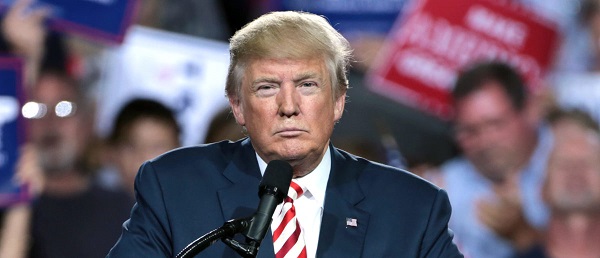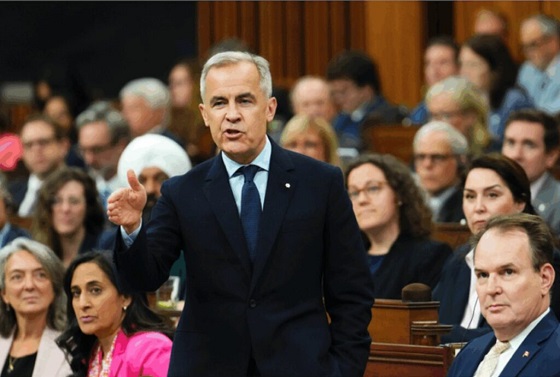International
Was the US election decided when the transgender movement overplayed its hand?

From LifeSiteNews
Gender-confused males competing against females in athletics has made the average person realize that there are biological differences that can’t be ignored.
It is too early to declare victory just yet, but the transgender movement is definitely having a very bad year. As I noted recently, there is a good case to be made that transgender activists won the election for Donald Trump — and Democrats know it. In fact, many more moderate liberals are on the warpath, demanding to know why the Left is beholden to a handful of men in skirts and LGBT extremists. Last week, for example, an irate Bill Maher took on Neil DeGrasse Tyson, who identifies as a science expert.
Maher noted that progressives have discredited themselves by refusing to admit that there are real biological differences between males and females, and that these differences matter in sports. No matter how hard he pushed, Tyson ducked and weaved and tried to use what he clearly thought were witty responses to avoid answering the question. The exchange ended with Maher finally telling Tyson: “Well, I’m going to file you under ‘part of the problem.’” Watch for yourself — it’s a great bit of TV:
More common, however, was the response of John Oliver, the alleged comedian who hosts “Last Week Tonight.” Oliver has been all-in on the transgender agenda for quite some time, and he was close to despair, yelling at his audience that only weird people care about this issue (yeah, you’re telling us), that there is “no evidence” of any issues with males playing in female sports, and that the issue of “safety” is also merely a bigoted illusion:
But facts, as they say, are stubborn things. There are scores of examples one could cite to prove that John Oliver and the other Baghdad Bobs of late-night TV are merely extremists bunkered down in a state of denial, but one recent example will suffice. A group of female players and an assistant coach are suing San Jose University over the deprivation of their privacy and scholarship opportunities as well as the fact that female players were placed at risk of physical harm. National Review’s report is worth reading in its entirety, but this section in particular stood out to me:
Brooke Slusser, a plaintiff who transferred to San Jose State University in 2023 on a scholarship for the women’s volleyball team, similarly expressed discomfort that she had undressed in his presence. Slusser claims that she was not informed by university staff that (Blair) Fleming is male, and she was often assigned to room with him on trips. Slusser later learned that she was frequently assigned to board with Fleming during road trips because Kress and other staff had asked Fleming who he wanted to room with, and he chose her.
“Due to her personal convictions and religious beliefs, Slusser would not have roomed with Fleming or changed clothes in front of Fleming if Slusser had known Fleming was male,” the lawsuit reads. “Slusser’s right to protect her bodily privacy was violated by SJSU, (Coach Todd) Kress, and the MWC through actions, policies and practices that caused her to lose her right to bodily privacy without consent and against her will.”
To sum up: A girl was assigned to room with a male, whom she did not know was male, at that male’s specific request. Now, perhaps John Oliver doesn’t see the problem with that. In fact, I’ll bet he doesn’t. He and the other celebrity vassals of the Human Rights Campaign probably think this — Brooke, was it? — needs some re-education to check her transphobia. Because to men like Oliver, there is no such thing as a violation of a young girl’s dignity if a trans-identifying man is doing the violating, and there is no such thing as privacy if it means shielding your body from the eyes of a trans-identifying man.
Fortunately, the public has gotten woke to what they’re defending here, and they’re losing — most recently, in Missouri, where a circuit court just upheld that state’s ban on gender mutilation for minors. Again, it is too early to tell where we are in this ugly culture war. But one can feel, perhaps, the high tide — and the turn.
Automotive
Ford’s EV Fiasco Fallout Hits Hard


From the Daily Caller News Foundation
I’ve written frequently here in recent years about the financial fiasco that has hit Ford Motor Company and other big U.S. carmakers who made the fateful decision to go in whole hog in 2021 to feed at the federal subsidy trough wrought on the U.S. economy by the Joe Biden autopen presidency. It was crony capitalism writ large, federal rent seeking on the grandest scale in U.S. history, and only now are the chickens coming home to roost.
Ford announced on Monday that it will be forced to take $19.5 billion in special charges as its management team embarks on a corporate reorganization in a desperate attempt to unwind the financial carnage caused by its failed strategies and investments in the electric vehicles space since 2022.
Cancelled is the Ford F-150 Lightning, the full-size electric pickup that few could afford and fewer wanted to buy, along with planned introductions of a second pricey pickup and fully electric vans and commercial vehicles. Ford will apparently keep making its costly Mustang Mach-E EV while adjusting the car’s features and price to try to make it more competitive. There will be a shift to making more hybrid models and introducing new lines of cheaper EVs and what the company calls “extended range electric vehicles,” or EREVs, which attach a gas-fueled generator to recharge the EV batteries while the car is being driven.
Dear Readers:
As a nonprofit, we are dependent on the generosity of our readers.
Please consider making a small donation of any amount here.
Thank you!
“The $50k, $60k, $70k EVs just weren’t selling; We’re following customers to where the market is,” Farley said. “We’re going to build up our whole lineup of hybrids. It’s gonna be better for the company’s profitability, shareholders and a lot of new American jobs. These really expensive $70k electric trucks, as much as I love the product, they didn’t make sense. But an EREV that goes 700 miles on a tank of gas, for 90% of the time is all-electric, that EREV is a better solution for a Lightning than the current all-electric Lightning.”
It all makes sense to Mr. Farley, but one wonders how much longer the company’s investors will tolerate his presence atop the corporate management pyramid if the company’s financial fortunes don’t turn around fast.
To Ford’s and Farley’s credit, the company has, unlike some of its competitors (GM, for example), been quite transparent in publicly revealing the massive losses it has accumulated in its EV projects since 2022. The company has reported its EV enterprise as a separate business unit called Model-E on its financial filings, enabling everyone to witness its somewhat amazing escalating EV-related losses since 2022:
• 2022 – Net loss of $2.2 billion
• 2023 – Net loss of $4.7 billion
• 2024 – Net loss of $5.1 billion
Add in the company’s $3.6 billion in losses recorded across the first three quarters of 2025, and you arrive at a total of $15.6 billion net losses on EV-related projects and processes in less than four calendar years. Add to that the financial carnage detailed in Monday’s announcement and the damage from the company’s financial electric boogaloo escalates to well above $30 billion with Q4 2025’s damage still to be added to the total.
Ford and Farley have benefited from the fact that the company’s lineup of gas-and-diesel powered cars have remained strongly profitable, resulting in overall corporate profits each year despite the huge EV-related losses. It is also fair to point out that all car companies were under heavy pressure from the Biden government to either produce battery electric vehicles or be penalized by onerous federal regulations.
Now, with the Trump administration rescinding Biden’s harsh mandates and canceling the absurdly unattainable fleet mileage requirements, Ford and other companies will be free to make cars Americans actually want to buy. Better late than never, as they say, but the financial fallout from it all is likely just beginning to be made public.
- David Blackmon is an energy writer and consultant based in Texas. He spent 40 years in the oil and gas business, where he specialized in public policy and communications.
International
House Rejects Bipartisan Attempt To Block Trump From Using Military Force Against Venezuela


From the Daily Caller News Foundation
By Adam Pack
The House of Representatives rejected a bipartisan attempt Wednesday evening to reign in President Donald Trump’s authority to use force against Venezuela.
Lawmakers voted 211 to 213 against a war powers resolution that would have blocked Trump from using military force against Venezuela absent congressional authorization. The failed vote comes a day after Trump designated the Maduro regime as a foreign-terrorist organization and ordered a “total and complete blockade” of all sanctioned oil tankers entering and exiting Venezuela.
Under U.S. law, Congress can restrict the president from using military force against a country or entity without the legislative branch’s explicit approval.
The resolution, sponsored by Democratic Massachusetts Rep. Jim McGovern, attracted the support of two leading anti-foreign intervention voices in the Republican Party, Reps. Marjorie Taylor Greene of Georgia and Thomas Massie of Kentucky. Republican Nebraska Rep. Don Bacon, a retiring, moderate Republican who has frequently criticized Trump, also sponsored the war powers resolution.
Texas Rep. Henry Cuellar was the lone Democratic lawmaker to oppose the resolution checking Trump’s powers. On Dec. 3, Trump pardoned the embattled congressman, who was set to face trial in 2026 on federal bribery charges.
“When war-making power devolves to one person, liberty dissolves,” Massie wrote on X. “Congress needs to vote before the President attempts regime change.”
Republican Florida Rep. Brian Mast, the chairman of the House Foreign Affairs Committee, countered that Trump does not need permission from Congress to execute “precise, limited strikes.”
Trump has ordered the military to rapidly build up its presence in the waters around Venezuela, amounting to more than 15,000 troops. The administration has also been engaged in a months-long campaign against alleged Venezuelan drug vessels in the Caribbean and Pacific, killing nearly 100 reputed traffickers in more than two dozen strikes.
The president told Politico that socialist dictator Nicolás Maduro’s “days are numbered” and has suggested that land strikes on the country could commence soon.
The House also rejected a resolution Wednesday from Democratic New York Rep. Gregory Meeks that would block the president from using force on any “presidentially designated foreign terrorist organization in the Western Hemisphere” unless authorized by Congress. The measure failed 210 to 216.
Senate Majority Leader John Thune voiced approval Wednesday of the escalating pressure campaign against Maduro.
When asked by reporters whether the Trump administration is pursuing regime change in Venezuela, the majority leader said “I don’t know if that’s a publicly stated policy position, but I don’t — I would certainly not have a problem if that was their position. I mean, I think Maduro is a cancer on that continent.”
White House Chief of Staff Susie Wiles clarified Trump’s strategy toward Venezuela in an explosive set of interviews with Vanity Fair published Tuesday.
“He [Trump] wants to keep on blowing boats up until Maduro cries uncle,” Wiles told the outlet. She also conceded that Trump would need approval from Congress for a land war with Venezuela.
-

 Daily Caller1 day ago
Daily Caller1 day agoParis Climate Deal Now Decade-Old Disaster
-

 armed forces2 days ago
armed forces2 days agoOttawa’s Newly Released Defence Plan Crosses a Dangerous Line
-

 International1 day ago
International1 day agoFBI didn’t think it had cause to raid Trump but DOJ did it anyway
-

 Business24 hours ago
Business24 hours agoOttawa Pretends To Pivot But Keeps Spending Like Trudeau
-

 Energy24 hours ago
Energy24 hours agoLiberals Twisted Themselves Into Pretzels Over Their Own Pipeline MOU
-

 Censorship Industrial Complex21 hours ago
Censorship Industrial Complex21 hours agoHow Wikipedia Got Captured: Leftist Editors & Foreign Influence On Internet’s Biggest Source of Info
-

 Health2 days ago
Health2 days agoCanadian gov’t considers sharing census data on gender-confused children
-

 Indigenous1 day ago
Indigenous1 day agoResidential school burials controversy continues to fuel wave of church arsons, new data suggests










